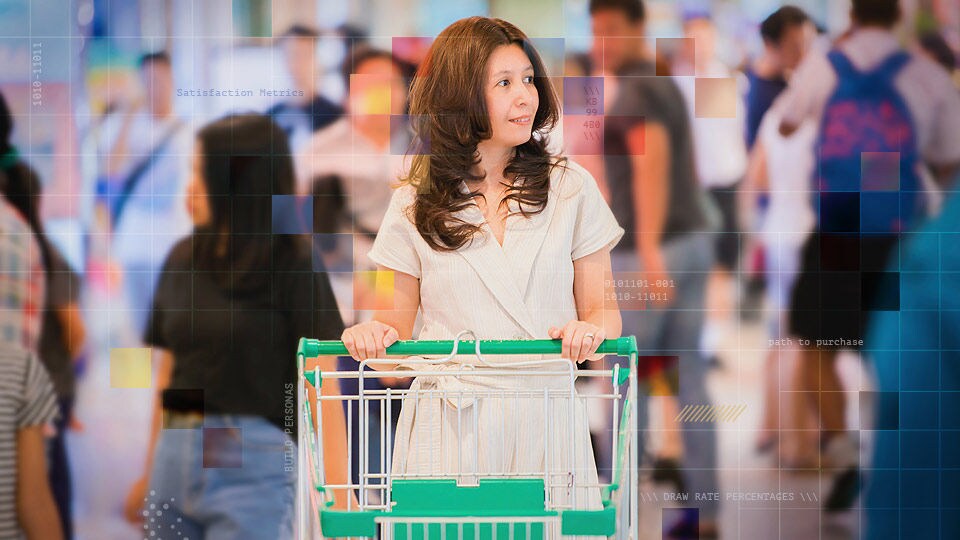Article
How Shopper Journey Data Can Deliver ROI for Retail COOs

From planning labor to managing supply chains to overseeing purchasing and more, chief operating officers (COO) in retail have a lot on their plates. With so many decisions to make, what COO wouldn't want the right decisions to be crystal clear — backed by hard data served up on a single, easy-to-understand dashboard?
Consider this: According to recent McKinsey research, of the six priorities seasoned U.S. retail merchants identified as key to mastering retail's post-pandemic landscape, the highest priorities include incorporating data and analytics into the fabric of daily operations, as well as expanding products and services and building cross-collaborative merchandizing teams — all things that may likely fall squarely on a COO's shoulders. So how can a COO put these priorities into action and make the best decisions? Quite simply: Put data to work.
While in-store and beyond-the-store data about customer behaviors and preferences can't make every operations decision "easy," it can certainly help make decision-making clearer for a great many scenarios — likely more than you think!
Let's examine what shopper journey data is available, why it matters, and how that data can be leveraged to deliver value across retail operations — and the entire enterprise.
Location, location, location
One of the most fundamental questions operations heads have to contend with is very simple: "Where should we put our stores?" Unfortunately, as simple as that question may be, the path to finding an answer is anything but. Ready or not, the age of the omnichannel consumer is here and it is changing the calculus on location planning — and that doesn't inherently mean a shift to online, but rather a strategy that considers the plethora of physical options that harmonize with all channels to satisfy shopper expectations.
Of course, there can be a staggering number of factors to weigh in the balance when choosing locations. That's why location strategy planning often involves specialists and expensive consulting firms, and is notoriously slow and laborious. But with the right data — namely, Shopper Mobility data — COOs can take some of the pain out of the process. Shopper Mobility data can tell you what other stores customers visit when passing by a given location, and whether there are competing or complementary stores in the surrounding area — which can help you both estimate visitor demographics and, more specifically, income levels of potential consumers.
Even better, for any location you're considering, Shopper Mobility data can show you valuable data points, like the volume of potential customers that pass through that area any given time, distance traveled, and where they're coming from, which allows you to estimate whether they're commuters or just locals running errands.
Think of it as a way of removing potential locations — strip center versus downtown, mall versus standalone — so you can focus more on potential locations with high traffic value. Sure, that doesn't alleviate all the pain from location planning, but it can answer some vital questions that, in short order, make a very long process mercifully shorter.
Optimizing in-store operations
For your existing stores, the right in-store and beyond-the-store data can tell your operations team a number of solutions you can use to refine and eventually optimize a given store's performance. For operations teams, the three most applicable solutions are Traffic Counting, Computer Vision, and Shopper Mobility. Here's a sample of what you can do with the data each solution delivers:
Traffic Counting
- Understand your peak traffic times for each day, and staff accordingly. Likewise, see what shifts can operate with minimal associates to avoid unnecessary labor spend.
- Understand your ideal shopper-to-associate ratio (STAR) to provide the best possible customer experience.
Computer Vision
In-store analytics
- Benchmark dwell time and draw rate, and use this data to optimize both layout in a zone or department, as well as promotional display location.
- Trace customer pathing from one department to the next to strategically enhance in-store layouts.
Parking facility analytics
- Better understand parking lot usage and, if necessary, refine its layout.
- Improve service levels by knowing how long shoppers wait in their cars for buy online, pick-up at curbside (BOPAC) orders to be fulfilled.
Shopper Mobility
- Understand where you customers shop before and after they visit your stores, and use this data to evaluate potential partnerships or services with those properties.
Each of these potential use cases provides operations leaders with actionable ways to improve the customer experience, increase profitability, and streamline operations. (Many of these also overlap with use cases for CMOs — read more on that here.) This is hardly an exhaustive list, but it should give you an idea of the potential this data has for impacting operations across the enterprise.
Takeaways
At Sensormatic Solutions, we know retail. That means we know there's no magic bullet solution, analytic, or metric that will solve all of your operational challenges. It also means that when we say we know there are a variety of valuable use cases you can deploy to improve the areas of performance that keep you up at night, you can trust us. As COO, no one knows what those challenges are better than you. As leaders in retail and technology — with decades of experience and expertise — no one knows solutions better than us.
To see the entire picture of how in-store and beyond-the-store data can be used to deliver outcomes that improve operations and drive profitability, get your copy of our latest white paper, Creating Experiential Retail Along the Shopper Journey, today.
Explore Related Topics

